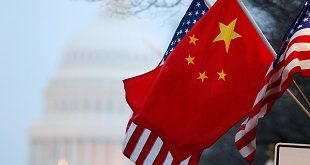
By Flavia Nassaka
Uganda’s elephant numbers increase but conservationists remain wary of poachers
Globally, elephants are under threat with the increase in demand for ivory. With estimates showing about 96 elephants being killed every day, global figures indicate that their number has decreased by 62% over the last decade. The story is,however,different for Uganda. The elephant population is on the increase. According to Uganda Wildlife Authority (UWA) statistics, the number of elephants in the country’s national parks stood at 5346 in 2014 from 4322 in 2006. Currently Queen Elizabeth National Park located within the Albertine Rift Valley in Western Uganda has the biggest number of animals. As of 2014, Queen Elizabeth National Park had 3,018 elephants from up 2,497 elephants in 2005.
Charles Tumwesigye, UWA’s Deputy Director in charge of conservation told The Independent that this increase is not because the elephants are giving birth.
The increase is largely because Uganda’s conservation areas, including Queen Elizabeth National Park, have witnessed relatively long periods of peace. As a result, elephants have crossed into the country from Democratic Republic of Congo (DRC) which has been witnessing prolonged war in its eastern region.

According to international reports, as the wars rage, rebels tend to trade ivory for ammunition.
One of the recent reports is by Bryan Christy a journalist with the National Geographic Channel, an American digital cable and satellite television who used fake elephant tusks embedded with GPS trackers and satellite-based tracking system to follow an ivory smuggling route in Central Africa.
He writes that by Day 19 of their journey, the fake ivory had traveled from the Central African Republic where they had been planted in the black market to Kafia Kingi enclave in Sudan, a purported safe haven for the Lord’s Resistance Army (LRA), a rebel group led by Joseph Kony.
In the article titled, ‘How Killing Elephants Finances Terror in Africa’ published on Aug 12, Christy shows how militias and terrorist groups exchange ivory for ammunition and drugs. LRA ex-soldiers testify to this.
Christy quotes one Michael Onen a sergeant in Kony’s army who had been part of the poaching operation in Garamba National Park found in the Democratic Republic of Congo (DRC). He tells Christy that during summer, soldiers had killed 25 elephants in the forest and were on their way to deliver the ivory to Kony. He further says that through transmissions, he once over heard Kony and his then-lead commander, Vincent Otti, argue over why the animals were being killed only for Kony to reply that he wanted ivory for ammunition to keep fighting.
Christy writes that after a failed peace agreement between Uganda and LRA in 2006, Kony sent an exploratory team to Darfur in Sudan to look into forging a new relationship with the Sudan Armed Forces (SAF), who had supported him against Uganda, hoping to exchange ivory for rocket-propelled grenades and other weapons.
Kony could have used the same tactic to finance his activities in Northern Uganda before relocating to the Central African Republic (CAR) in 2006. But, officials at UWA and Uganda People Defense Forces (UPDF) say they never got any information pointing to that.
“That’s mere speculation. We never got any evidence that Kony was killing elephants to acquire weapons from anywhere,” UPDF’s spokesperson Lt. Col Paddy Ankunda told the Independent on Aug 20.
However, UWA statistics show that the number of elephants in game parks surrounding areas where the LRA operated dropped at the time. For instance, in Murchison Falls National Park where tourists were attacked by the rebels in 2005, the number of elephants had reduced from 778 in 1999 to 516.
Tumwesigye said that though there could have been poaching during the war, this drop in number was mainly because animals prefer peaceful environments and they therefore tend to migrate whenever there’s war.
Not just the LRA war but all the wars we’ve had have led to reduction in elephants’ population for instance in the 1970s and 80s when Uganda suffered a series of wars, the numbers dropped to as low as 2000 animals in the whole country from 30,000 in the 1960s,Tumwesigye said.
He explains that elephants in Uganda are mainly in protected areas like national parks yet in other countries they occur both in parks and unprotected areas. This makes the roaming animals a target for the poachers.
Since Kony was driven out of the country, the numbers of animals in the Murchison falls have also been on an increase. By March 2010, the elephant population in the Murchison falls had almost doubled to 904 from 516 in 2005. By end of last year, the park had 1330 animals yet the overall population in the country stood at 5346 from 2400 in 2003.
But as we celebrate these numbers, Uganda is still rated top among countries that deal in illicit ivory trade. It’s among the so called ‘gang of 8’together with Tanzania, Kenya, China, Thailand, Malaysia, Vietnam and the Philippines. Of recent, tonnes of Ugandan ivory have been impounded both in the country and outside whereby in March 4 tonnes of Ugandan ivory were impounded in Singapore yet the biggest seizure within the country was in 2013 when Uganda Revenue Authority impounded 2.9 tonnes.
Tumwesigye says this ivory is not necessarily Ugandan, it’s just because the country is a transit route.He explains that some of it comes from other countries like Congo through Uganda because of the country’s connectivity to Nairobi, Dubai or Qatar with few hurdles.
“The trend of ivory trade starts with a king pin somewhere who works with agents in Uganda. Uganda doesn’t have those big mafias. We have done DNA analysis on one of the big seizures and found it wasn’t Ugandan,” he says adding that Uganda is a preferred transit route because of the weak legal system. He cites 2013 when court ordered UWA to return ivory to a Congolese trader who claimed that he had got the tusks with permission from a provincial governor in DRC.
According to the law, one found guilty of trading in ivory is legible to paying a minimum of Shs1 million yet in the neighboring Kenya, the law was revised with tough penalties of up to 30 years in jail or a fine of KShs20 million(about UShs600 million).
In March 2013, during the 16th Convention on International Trade in Endangered Species (CITES) conference in Bangkok, members asked ‘the gang of 8’to commit to addressing the poaching crisis. There, stakeholders drew up action plans, timelines, and milestones of curbing ivory trade.
Tumwesigye says last year, the action plan was reviewed and awaiting another review in January next year. This is aimed at convincing CITES that they are able to control the numbers. He says among the indicators that they are on track is the fact that they are now able to impound the ivory before it leaves the country yet before ivory from Entebbe airport could be impounded in foreign countries.
However, he expresses fears that since elsewhere there are new tactics of killing elephants like using helicopters, the same could happen in Uganda.
“We don’t know what the mafias are planning. The numbers shouldn’t excite us as some of those involved like Joseph Kony are Ugandans”.
 The Independent Uganda: You get the Truth we Pay the Price
The Independent Uganda: You get the Truth we Pay the Price



